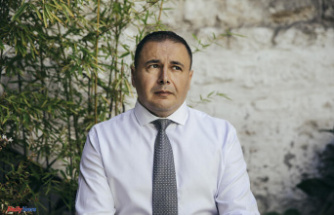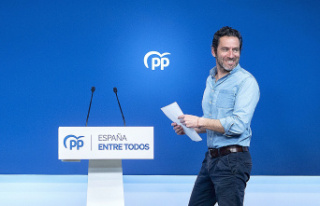In their final report, submitted on Sunday April 2, the members of the citizens' convention on the end of life came out, overwhelmingly, in favor of access to assisted suicide and euthanasia. Currently, the end of life in France is governed by the Claeys-Léonetti law, adopted in 2016, which provides in particular that terminally ill patients can benefit from "deep and continuous sedation until death".
But the conventional consider that the application of this practice which aims to put patients to sleep, at the very end of life, to avoid refractory pain, has "limits". Above all, 97% responded that the current end-of-life "support framework" should "evolve".
Euthanasia, assisted suicide, assisted suicide, active assistance in dying or deep and continuous sedation until death: Le Monde takes stock of the terms and concepts of the end of life.
According to the definition adopted by the National Consultative Ethics Committee (CCNE), in a 2013 opinion, euthanasia is an "act intended to deliberately end the life of a person suffering from a serious illness and incurable, at her request, in order to put an end to a situation that she considers unbearable".
In Belgium, euthanasia – during which the doctor therefore injects the lethal product – has been authorized since May 28, 2002. According to the text, the request must be “voluntary, thoughtful, repeated” and “without external pressure”. In 2021, this country recorded 2,700 euthanasias, or 2.4% of the total number of deaths.
The Netherlands has regulated euthanasia since April 1, 2002. The law provides that the doctor and an independent expert must establish that the patient is enduring unbearable suffering and without hope of improvement.
Unlike euthanasia, in the context of assisted suicide, it is the person himself who performs the fatal act, and not a third party. Assisted suicide "consists in giving a person the means to commit suicide himself (…) by absorbing a lethal product which has been previously delivered to him", defines the CCNE.
Assisted suicide has been permitted in Switzerland since 1937, but euthanasia is not legal. The person does not necessarily have to be terminally ill, but must provide proof of their capacity for discernment.
Austria legalized assisted suicide in December 2021, before the law comes into force on January 1, 2022.
Italy, for its part, decriminalized it in 2019 for fully conscious patients "kept alive by treatments (...) and suffering from an irreversible pathology, a source of physical and psychological suffering which they consider intolerable".
In common parlance, assisted suicide is often referred to as "assisted suicide". However, it designates a different situation, particularly in the eyes of CCNE. Strictly speaking, assisted suicide refers to the situation of a person who wants to commit suicide but who is not physically capable of it and needs the action of a third party. Assisted suicide "mobilizes a third party more closely than assisted suicide", notes the committee, but "the difference is tenuous with the notion of euthanasia".
However, the CCNE points to a "real difference" between assisted suicide and euthanasia: "The will of the person who wants to die and who decides to do so, but who is unable to kill himself, is supposedly primary and clearly affirmed. It asks a third party (…) to do what it cannot do on its own,” reads the notice. Euthanasia "concerns [therefore] people who do not wish to commit suicide, even with assistance".
"Some people, in fact, can express both the desire to die and their refusal, or their psychological impossibility to kill themselves by committing suicide - and this outside of any impediment linked to the disease -, or still their preference for a doctor to end their existence, at their request, rather than doing it themselves, "details the same opinion.
Euthanasia and assisted suicide can be considered as variations on the concept of "active assistance in dying", the legalization of which has already been deemed possible in France by the CCNE in September 2022. The majority of the members of the Citizens' Convention on end of life is in favor of both the legalization of assisted suicide and euthanasia, 40% of them believe that these two methods should be offered interchangeably.
Some 28% believe that "assisted suicide should prevail and euthanasia should remain an exception", in particular to avoid too much involvement of caregivers. The report also reveals the results of a Convention vote on nineteen models of access to active assistance in dying. They placed at the top the "combinations" which consider assisted suicide as a general possibility and euthanasia as a modality in exceptional cases - it would be conceivable in particular for a patient who cannot perform the gesture alone.
In Luxembourg, active assistance in dying leaving the choice between euthanasia and assisted suicide has been legal since 2009. For a request to be legal, the patient must be conscious, not have been subjected to external pressure and be " in a hopeless medical situation with no prospect of improvement".
Spain has also allowed both routes since March 2021. Spanish law provides that anyone with "serious and incurable illness" or "chronic pain placing them in a situation of incapacity" can seek medical assistance to die and thereby avoid "intolerable suffering".
The Claeys-Léonetti law, currently in force in France, allows "deep and continuous sedation until death" for terminally ill patients in very great suffering, whose life is threatened "in the short term". People are put to sleep permanently by injecting midazolam, a powerful, fast-acting drug.
At the same time, treatments are stopped when "they appear unnecessary, disproportionate or when they have no other effect than the sole artificial maintenance of life", according to the law. Hydration and nutrition are also suspended, and painkillers are administered. According to specialists, death occurs around a week. It is due to the failure of organs, which cease to function after stopping treatment. Due to kidney failure, potassium builds up in the blood and eventually causes the heart to stop.
The healthcare team must accompany the patient to the end, by providing palliative care, in particular care for the toilet, touch-massage, mouth care (moistened compresses against dryness, etc.) or eye care (drops ).












